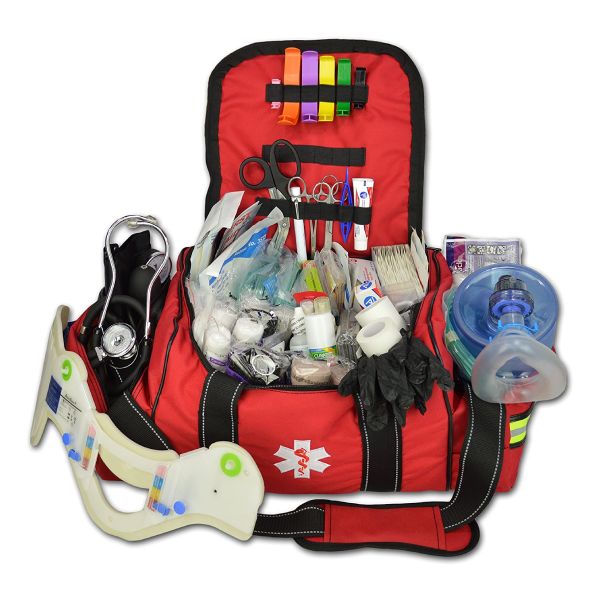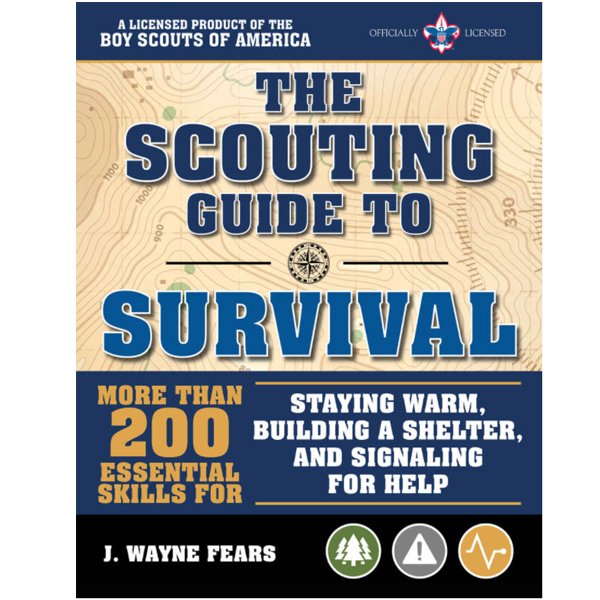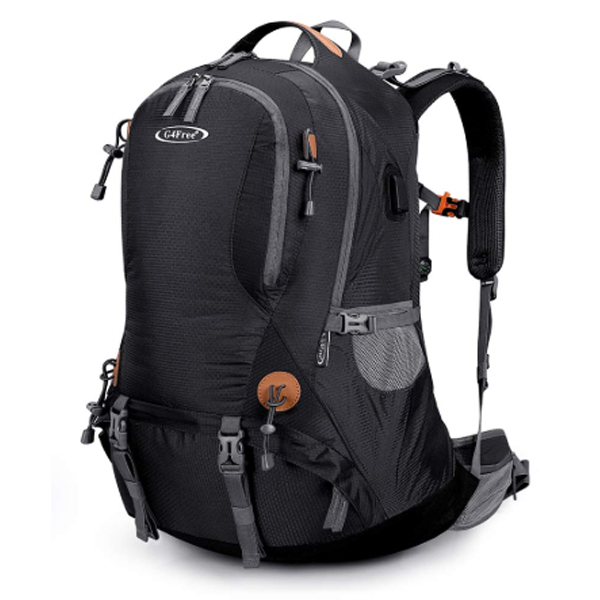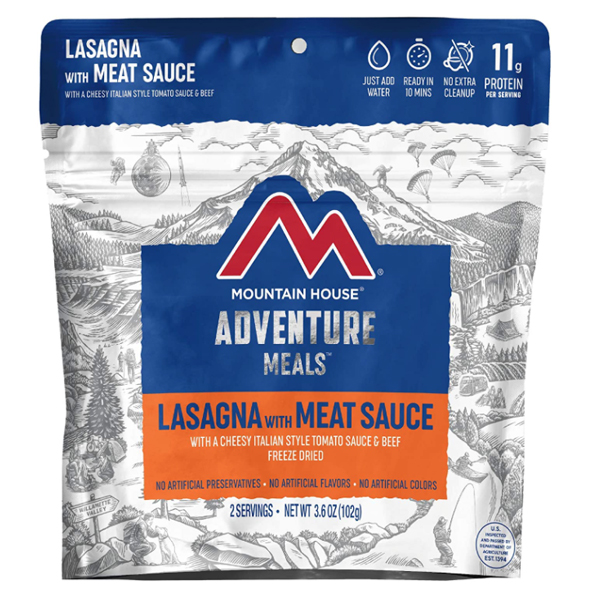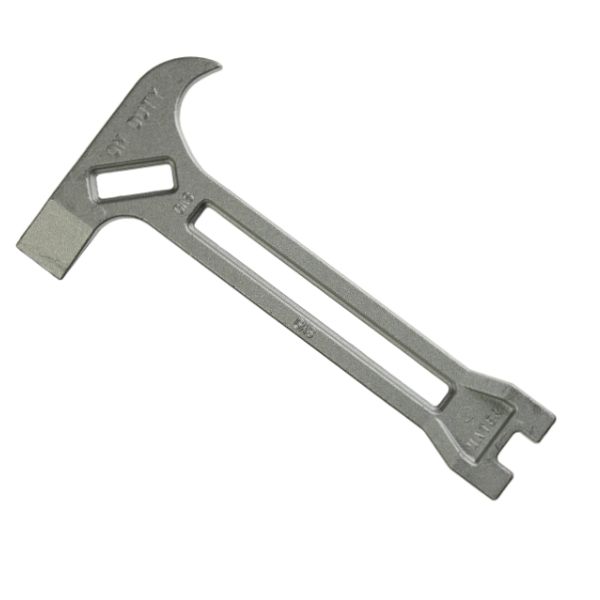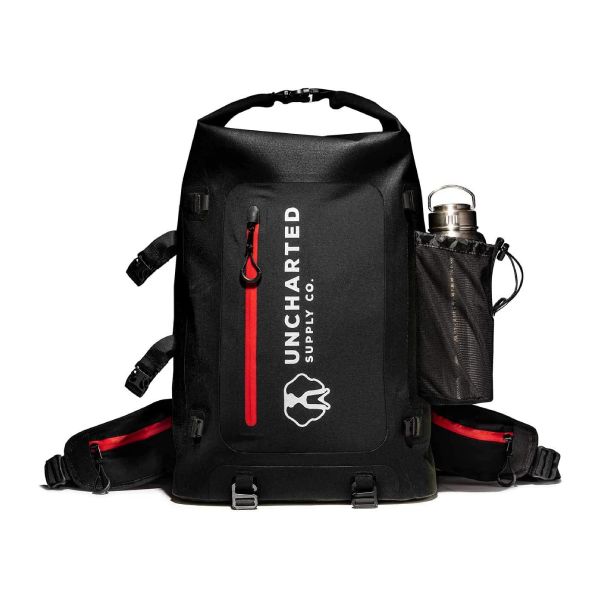Complete Guide to Survival First Aid
First Aid For Anyone
Medical emergencies come up all the time. From common cuts and scrapes to broken bones and severe injuries, having the right first aid supplies on hand can make a huge difference.
Experience: I'm Hooked!!
When I was a kid I joined my fellow Scouts on an overnighter in Montana. We visited a high mountain lake and set up camp. That evening we pulled out the rods and tackle and started fishing.
All of a sudden one of the guys hollered out, "Help! I'm hooked." He had done something and had his finger pierced by one of the fishing hooks. It was embedded deep in the flesh with the point poking out the other side. Even the barb was deep inside of the skin.
Our Scout Master came to the rescue. He calmly said, "you're not going to like this but we need to keep pushing the hook through until the barb comes out the other side."
We watched as he took out his first aid kit and prepped the site of the wound with antiseptic pads. He pushed the hook through the flesh in a curved motion to minimize the impact to the damaged flesh. The tip came out the other side until the barb pushed through. He pulled out his multi-tool and clipped off the hook just below the barb. Then he pulled the hook back out going the other direction. He put some anti-bacterial ointment on the wounds and bandaged and taped it up.
He later explained that if they had just pulled the hook out the barb would have really destroy a lot of muscle and skin. Clipping off the portion with the barb made the exit smooth and minimized the wound size.
In this article we explore and recommend the best first aid kits, first aid supplies and first aid training resources currently on the market. We strongly urge you to equip your home, vehicles, places of work, school, and worship with the right kit so you can be ready at a moment's notice. We also strongly urge you to get some professional training so you know how to diagnose and treat ailments well enough to transfer someone to the pros.
Besides having the right supplies, knowing how to use them properly can make a bad situation better very quickly. Let's get started!
Best Field First Aid Kit
Excursion Field First Aid Kit (Tactical, Compact, IFAK)
Light weight, compact survival first aid kit for emergencies and camping - includes supplies
Buy On AmazonBest Go Bag First Aid Kit
About This Article
Content:
Scope:
Difficulty:
Table of Contents
Disclaimer: We are NOT doctors or medical professionals. While we have experience as Scout Masters, CPR trainees, etc. we are not practicing doctors.
The information on this page was researched from Scout manuals, web sites like the Red Cross, product reviews, and personal experience. Recommended supplies and products are based on our preferences and favorites. Consult a medical professional to determine if they are right for you.
First Aid Kits
There are many options for first aid kits. A quick search online shows hundreds of kits of all shapes and sizes. How do you know which one to choose? What supplies should be inside? Here are some of the options we like.
Our first aid kit checklist highlights the recommended supplies at each stage.
Basic First Aid Kits
Basic first aid kits include supplies to handle common cuts, scrapes, and mild pain. They include small bandages, gauze, pain medication tablets, disinfectants, etc.
Basic kits are perfect for adding to a purse or coat pocket. They come in small zippable pouches They're great for stopping mild bleeding, etc.
Standard First Aid Kits
A standard first aid kit usually has a few hundred pieces of first aid supplies. In addition to the basic kit you'll find various tapes, larger bandages and pads, antiseptics, wraps, and medications. They come in molle pouches, clam-shell cases or pouches.
These kits are still focused on very basic emergencies. They are super handy for a majority of incidents.
Expanded First Aid Kits
An expanded first aid kit has items like pressure bandages, tourniquets, irrigation syringes, splints, chest seals, and more. It's intended for people with a bit more technical training. Few events at home require these types of resources. Sporting events, outdoor adventures, shooting incidents may require items and training like this.
Trauma Kit
A trauma kit is full of advanced gear and supplies. Neck braces, sprints, pressure cuffs, airway accessories, suture kits, etc. compliment a kit this advanced.
Refillable Supplies
There are first aid kits that are more of supply refills. They contain many of each item so someone can restock an existing first aid kit. They may have medicines, bandages, pads, gauze, etc. to replenish depleted stock.
Excursion Field First Aid Kit (Tactical, Compact, IFAK)
Light weight, compact survival first aid kit for emergencies and camping - includes supplies
Buy On AmazonChoosing a First Aid Kit
The level of first aid kit you should acquire should match your first aid training. You should know how to use every item in your kit. You should know how diagnose when to use something and how to apply it correctly. First aid professionals will tell you that using first aid gear incorrectly can make a situation much worse.
Experience: Allergic Reaction
We know a family with a son who is allergic to many different things. Some allergies are life-threatening. A brush with peanuts was nearly disasterous.
One time they were on vacation on a scenic tour. The boy started struggling to breathe. The mom looked around to see if he had touched or ingested something. He started to break out in hives on his hand and it started to swell.
She knew what to do. They carry an Epipen everywhere they go. She used it and minutes later the emergency was over and he was relaxed.
Later they say a boy with a bag of peanuts. He had likely touched a handle her son touched later.
Some situations require specialized first aid supplies.
We recommend you have on hand the first aid supplies and kits that match your experience and training. Here's how to choose:
- Location - Consider where you'll be and what resources are available there. Emergencies while sitting in church will likely be different than an emergency an athlete may experience. An emergency in the outdoors requires supplies on hand since it can be hard to get to a hospital.
- People - Who are you responsible for? who else is with you? will anyone else have medical experience?
- Training - How much first aid training do you have? You need to know how to correctly use the supplies in any kit you choose.
- Mobility - Do you need to carry your first aid kit with you? or should it be stationary and mounted to a wall?
If in doubt, buy a first aid kit with more supplies than you know how to use. Once you receive the kit, do some research or ask a medical professional to get additional training. More preparedness is always better.
First Aid Kit Levels
We don't all have the same emergency or first aid experience and training. We recommend you get as much as you can. You never know when you might need it.
Experience: Traumatic Head Injury
A couple of years ago I took my son to ball practice. As we got out of the car, we saw the grandmother of one of the teammates slip on the ice and go down HARD. I knew she was hurt the second her head hit the pavement. I slowed my son down so we didn't have multiple injuries to worry about.
As I got to her I felt my eyes grow wide. Blood seeped from her mouth and she wasn't breathing. It was the biggest gut check! Do you know what to do?
Years of training in the Boy Scouts as a boy and leader gave me just enough information to walk through the right steps. My heart was pounding and the adrenaline was coursing.
Step 1 - Yell for help!!!
Step 2 - Assess the injuries
Step 3 - Work on each need based on priority – We gotta get her breathing again!!
Within minutes we had a group of people chipping in and bringing necessary gear. 911 was on the way, she was breathing, and a pile of blankets insulated her from the cold. We gave her the best chance possible.
The ambulance arrived and the pros took over – thank goodness!!!
Fast forward a few years later – grandma is still attending basketball games.
Occasionally, I’m haunted by what could have been. A little training and the right gear made ALL THE DIFFERENCE.
Knowing what to do is critical. The pros are willing to train people. In the Scout program we had EMTs, doctors, fire fighters, and others volunteer time to train the boys. They want as many people trained as possible to make their job easier.
Here are the general levels you might find yourself in:
Level 0 - First aid Rookie
A first aid rookie can tackle the very basic first aid. They may know how to apply a Band Aid to a simple cut, recommend Asprin for a head ache, or clean a scrape.
Level 1 - Boy Scout
We recommend that everyone gets trained to the level of a Boy Scout. Scouts are trained on using basic to standard first aid supplies and diagnosing and resolving many of the most common first aid incidents.
They can typically stop mild to moderate bleeding, help someone start breathing again, prepare a splint or sling for a broken limb or sprained joint, and more. They have life-essential skills and can walk through processes to narrow down a problem and administer the appropriate aid.
Level 2 - Military/Police
Military basic training adds a level of skills focused on the traumas experienced in the field. They are equiped to treat gunshot wounds, concussion injuries, explosion injuries and other war-time injuries.
Most civilians won't spend the time to gain the skills needed for this level of first aid. Really, it's not required for most situations.
Level 3 - Doctors/EMTs
Medical professionals are the elite in first aid training. They go to school for years to learn how to repair the human body. We love our doctors and emergency first responders.
It's likely you and I will never get to this level of first aid skill. While we should always be learning, we won't acquire a college degree.
Choose Your First Aid Kit Based on Your Training
Choose a first aid kit that matches your level of training. All of us should be as prepared as Boy Scouts. We should know how to diagnose and treat common injuries and illnesses. Buy first aid supplies to support these skills.
Scouting Guide to Wilderness First Aid
Critical Scouting first aid field guide for survival situations
Buy On AmazonRecommended First Aid Supplies
As a former Boy Scout Master we interacted with EMTs, Firemen, CPR certifiers, emergency room doctors, surgeons, and more. We trained boys on basic first aid, survival first aid, and how to use supplies, etc.
Over the years we've come up with a recommened survival system for emergency survival. The system consists of 4 Stages. The first two stages are focused on personal survival gear and supplies while the last two are focused on household or community gear and supplies. Each Stage has the recommended first aid checklist based on necessity, weight, and activity.
Survival System
For emergency preparedness we recommend setting up a survival system. Part of the system includes essential first aid supplies.
Stage 1: Essentials
We recommend everyone carries the basic essentials on daily activities. Homes and vehicles should all have first aid supplies. At least, we should be able to treat cuts, scrapes, small breaks, etc. Some people should carry supplies as advanced as bleed stop, a tourniquet, etc.
Stage 2: Go-Bags
In case of evacuation, Go-Bags should contain mid-level supplies. An evacuation may mean you don't have direct access to a hospital or treatment center so we should be pretty self reliant.
You should carry additional items when we venture away from civilization. We should be able to treat any injuries or illness enough to get home. We should get a little extra training as well.
Stage 3: House Kit (for Home and Family)
In most communities we have access to medical services via 911. However, some injuries can be more urgent. Significant bleeding injuries, neck injuries, head injuries, poisonings, etc. may all require immediate first aid while the professionals are on the way. We should be ready.
Stage 4: Bulk Supplies and Equipment
We recommend having food storage, extra toiletries, and equipment (i.e. generator) for shelter-at-home situations. Having robust, long term first aid is crutial if you don't have access to critical care.
The Goal of the Staged Approach
The goal in emergency preparedness is to always have the right gear and supplies on hand depending on your situation. When you're away from home you often don't have ready access to common items you might have at home. You also may not have the ability to carry a lot of weight and bulk.
A staged approach lets you carry the maximum possible without overdoing it for the situation.
How to Get Started
In this article we've leared there are a number of first aid kit options, recommended supplies, etc. So, how do you get started? How do you build up the supplies? We have some recommendations. Start here:
Essentials First Aid Kit
Start by investing in the basics and the essentials. You should be able to treat a majority of the common injuries and illnesses. Consider these first aid kits that have well rounded supplies for any home or setting.
Excursion Field First Aid Kit (Tactical, Compact, IFAK)
Light weight, compact survival first aid kit for emergencies and camping - includes supplies
Buy On AmazonFirst Aid Enhancements
Enhance the essentials with a few specialty items and learn how to use them. Add a tourniquet, pressure bandages, compression gause, etc.
Trauma Kit
Supplement your standard first aid supplies with a trauma kit. Many of the items in this kit would never be used in normal circumstances because 911 first responders are specifically trained for situations that require this type of gear. However, there are times when EMTs and other professionals are overwhelmed and unavailable. In an evacuation setting, a kit like this could be lifesaving.
First Aid Training
Using first aid supplies inappropriately can make a situation worse. It's possible to introduce infection, make bleeding worse, make a break worse, etc.
False Information: Chest Vent
I recently read a story about people who carry devices for puncturing the chest cavity in rare situations when a lung collapses (i.e. an auto accident). In theory, the devices let the chest cavity vent so internal pressures don't push in on the lung.
The issue is that the device rarely works and can make things much worse because you're actually opening up the body to infection when it may be unnecessary. Many professionals refuse to use them. There are other ways to achieve the desired result but they require hospital level equipment.
It can be a very bad idea to try something on someone without the proper training.
Train Like a Boy Scout
Get trained to use your first aid kits. We recommend educating yourself to the minimal level of Boy Scouts. They are required to pass off the First Aid Merit Badge as part of their highest honor of Eagle Scout. They learn to:
- Do CPR
- Treat burns
- Stop simple to moderate bleeding
- Immobilize breaks and joint injuries
- Relocate injured victims
- Restore breathing
- More...
Get CPR Trained and Certified
Cardiopulmonary resuscitation (CPR) is an emergency procedure that combines chest compressions often with artificial ventilation in an effort to manually preserve intact brain function until further measures are taken to restore spontaneous blood circulation and breathing in a person who is in cardiac arrest.
Most communities have CPR training resources. Fire departments, hospitals, clinics, EMTs, etc are often willing to train groups. Often they will dedicate time to certify individuals or groups.
Get C.E.R.T Trained
Many communities have C.E.R.T trained emergency preparation organizations. They'll meet with groups to train them on how to help first responders in an emergency situation. The are very willing to share their info. They want to multiply the number of people who can help when disaster hits.
Scouting Guide to Wilderness First Aid
Critical Scouting first aid field guide for survival situations
Buy On AmazonTraining
We recommend everyone get CPR trained.
Online CPR Training - Red Cross
First Aid Supplies and Regular Training
Every household, vehicle, workplace, etc should have first aid supplies and people who know how to use them correctly. Emergencies happen all the time. While we can rely on professionals for the serious situations we should be prepared for times when they might be overwhelmed or unavailable.
Survival First Aid Supplies
Having the right first aid supplies on hand can be life saving. Knowing what options you have can be a challenge. The goal of most first aid supplies is to give you time to get to a hospital to have the wound or illness treated by a professional.
We've listed some of the most common first aid supplies and gear with brief descriptions. You can find additional information on manufacturing materials and processes by searching for specific products.
We can't stress this enough - get trained to use first aid supplies. Whether you need to treat a common scrape or injury or you are called on to do something more advanced, having the required skills can make a world of difference in an emergency.
These descriptions are abbreviated from first aid manuals, manufacturer lists, and other web sites. They're intended to get you started.
Wipes
- Alcohol Wipe - small cloth wipe with rubbing alcohol sealed in a small pack intended to cleanse a small area before treatment
- Sting Relief - small cloth wipe with sting relief ointment sealed in a small pack intended to reduce the irritation of an insect sting
Dressings and Gauze
- Compressed Gauze - package of gauze intended for cleaning and treating wounds and injuries; gauze is compressed in the package so it takes less space in a kit
- Gauze Pad - single pad intended to cover or treat a wound or injury, usually sealed in a paper package
- Gauze Roll - single roll of gauze intended to wrap and treat a wound or injury, usually sealed
- Wound Dressing - larger gauze or fabric pad intended to wrap and treat a wound or injury
Adhesive Bandages
- Common - adhesive bandage made of plastic or fabric intended for common small scrapes, cuts, and abrasions (Bandaid brand is common)
- Butterfly - adhesive bandage made of plastic or fabric intended to help close small scrapes, cuts kind of like stitches
- Knuckle - adhesive bandage made of plastic or fabric intended for common small scrapes, cuts, and abrasions on fingers or toes
- Mole Skin - adhesive bandage made of plastic or fabric intended for blister prevention and treatment, reduces the friction from shoes on the skin
Medium Bandages
- Trauma Pad/Dressing - large single pad intended to cover or treat a wound or injury, usually sealed in a paper package
- ABD Pads - highly absorbent sterile dressing intended for wounds with large amounts of fluid, often abdominal injuries
Large Bandages
- Pressure Bandage - also known as an Israeli Pressure Bandage, a pressure bandages is made of fabric and has a mechanical lever to add pressure to the wrapped injury
- Chest Seals - intended for gunshot wounds or puncture wounds, a chest seal closes a cavity opening to reduce infection, fluid loss, and air passage
Elastic Bandages
- Elastic Roll - fabric elastic roll (Ace Bandage) intended for joint injuries; roll is wrapped around a joint (knee, elbow, etc) to provide structural support
- Burn Dressing - moist, nonstick pad commonly coated with a gel to reduce the effects of a burn; reduces pain and infection
Tablets and Pills
- Antacid - small tablet taken orally to reduce acid reflux
- Tylenol - small tablet taken orally to reduce pain
- Asprin - small tablet taken orally to reduce pain or treat some blood issues
- Ibuprofen - small tablet taken orally to reduce pain
- Pepto-Bismol - small tablet or fluid medicine taken orally to treat diarrhea or stomach issues
- Allergy - small tablet taken orally to reduce some allergic reactions
- Water Purification - small tablet applied directly to water (not taken orally) to purify drinking water
- Imodium - small tablet or fluid medicine taken orally to treat diarrhea or stomach issues
- Bactrim Antibiotics - small antibiotic tablet taken orally to treat ear infections, urinary tract infections, etc.
Creams, Gels, and Liquids
- Antibiotic Ointment - gel used to reduce infection at the site of a wound
- Antiseptic Spray - spray used to reduce infection at the site of a wound
- Burn Cream - cream used to reduce pain and infection at the site of a burn
- Burn Spray - spray used to reduce pain and infection at the site of a burn
- Sun Screen Cream - cream or gel applied to skin to reduce sunburn
- Insect Repellent / DEET - spray or gel applied to skin to hide from insects
- Vaseline - hydrating/lubricating gel used to cover and treat certain wounds
- Saline Eye Drops - water-based liquid intended to clean and treat eyes
- Miconazole - antifungal medication intended to treat vaginal infections
Powders
- Bleed Stop - powder intended to reduce or stop bleeding from a large wound; powder crystallizes to clot the blood until professionals can treat the wound
Splints and Slings
- Triangle Bandage - arm bandage intended to suspend a broken or injured arm; creates a sling hanging around the neck
- Aluminum Splint - aluminum strap intended to give structural support to an injured finger or toe
Tape
- Silk Tape - adhesive tape intended to wrap bandages and pads around appendages
- Adhesive Roll - adhesive tape intended to wrap bandages and pads around appendages
- Coban Roles - elastic adhesive tape intended to wrap bandages and pads around appendages
- Athletic Tape - sturdy adhesive tape intended to wrap joints and appendages for structural support
Tools/Protection
- Disposable Gloves - plastic hand covering to protect a first aid responders and victims from contaminating or infecting one another
- Tweezers - small hand-held device used to remove splinters, slivers, and debris from a wound
- Tourniquet - device intended to cut off blood supply to appendages for severe injuries requiring blood stoppage before a victim bleeds out
- Trauma Shears - sturdy scissors/shears intended to cut bandages, tape, and clothing
- Surgical Sponges - sponge intended to cleanse a wound and remove blood and other fluids
- Pressure Cuff - device used to measure blood pressure
- Airways - plastic device used to hold open a pharyngeal airway for emergency ventilation
- CPR Mask - protective device allowing first aid responder to perform CPR without risking contamination for the victim or responder
- Neck Brace - structural device intended to provide structural support for a neck injury
- Irrigation Syringe - syringe used for pouring water or other solutions over injuries and wounds
- Safety Pins - used to hold fabric and cloth together
Training and Information
- First Aid Reference Guide - instruction guide for on-site first aid treatment and supply usage
First Aid Supply Management
Start right away by buying the essentials and getting trained. Keep learning and enhance your supplies over time.
Set aside a budget right away to purchase first aid kits and supplies so you are ready to go. Check them once a year to see if any have expired. Replace them.
We hope you're ready when the time comes. You and the ones you care for deserve it.
1This post may contain affiliate links. If you make a purchase, I may earn a small commission at no additional cost to you.
2 As an Amazon Associate we earn from qualifying purchases.
3 Most reviews are based on personal experience from one of our content editors. Some are based on research and the opinions of other reviewers.





